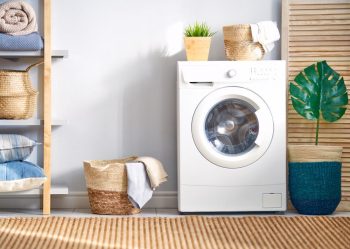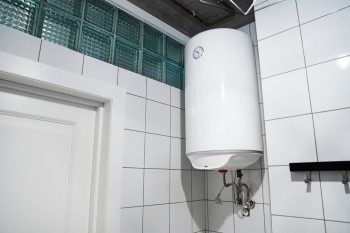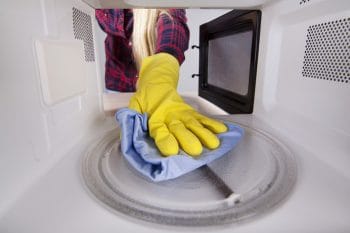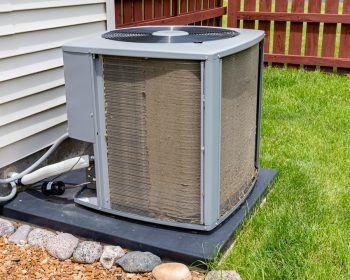
When it comes to providing hot water in your home, tankless water heaters are a modern and efficient choice. Unlike traditional heaters with storage tanks, tankless heaters provide hot water on demand, saving energy and lowering your utility bills. However, adjusting the temperature on these heaters can seem a little daunting if you’re not familiar with the process. In this comprehensive guide, we’ll show you how to safely and efficiently turn up the temperature on your tankless water heater.
To turn up the temperature on a tankless water heater, locate the control unit which is usually on either side of the heater. Adjust the temperature using the LED panel or a remote control if your heater has one. The recommended temperature setting is 120℉ to prevent scalding, but you can increase it to 140℉ if necessary. Always refer to the manufacturer’s instructions for your specific model and test the water temperature before and after making adjustments.
Understanding Tankless Water Heaters
A tankless water heater, also known as an on-demand water heater, heats water only when it’s needed. This eliminates the need for a storage tank and significantly cuts down on standby energy losses. When you turn on a hot water tap, cold water travels through a pipe into the unit, where either a gas burner or an electric element heats it. As a result, tankless water heaters deliver a constant supply of hot water. You don’t need to wait for a storage tank to fill up with enough hot water. According to Energy.gov, for homes that use 41 gallons or less of hot water daily, tankless water heaters can be 24%–34% more energy-efficient than conventional storage tank water heaters.
Benefits of Using a Tankless Water Heater
The benefits of using a tankless water heater go beyond energy efficiency. Here are some additional advantages:
- Lower utility bills: Due to their energy efficiency, tankless water heaters can lower your utility bills. The average household can save hundreds of dollars every year.
- Endless hot water: Because they heat water on demand, tankless water heaters provide a constant supply of hot water.
- Space-saving: Tankless water heaters are compact and can be installed in smaller spaces, freeing up valuable space in your home.
- Longer lifespan: Tankless water heaters typically have a longer life expectancy than traditional water heaters.
- Reduced eco-impact: Tankless water heaters not only reduce consumption of non-renewable fuel sources, but they are also repairable with replaceable parts, unlike traditional water heaters.
How to Adjust the Temperature on your Tankless Water Heater
The process of adjusting the temperature on your tankless water heater is relatively straightforward. Here’s how you can do it:
- Locate the control unit: Typically, this control unit is located on the left or right side of the tankless water heater.
- Adjust the temperature: Most tankless water heaters have an LED panel where you can adjust the desired temperature. If your heater has a remote control, you may need to use it to adjust the temperature.
- Be cautious with temperature settings: The recommended temperature setting for both tank and tankless water heaters is 120℉ to prevent scalding, but you can increase the temperature to 140℉ if you choose.
- Follow manufacturer instructions: Always refer to the manufacturer’s instructions for your specific tankless water heater model when adjusting the temperature.
Safety Precautions
It’s crucial to follow safety precautions when adjusting the temperature on your tankless water heater:
- Consult your water heater’s owner’s manual for specific instructions on how to adjust the temperature.
- Test the water temperature before making any adjustments.
- Adjust the temperature using the LED panel on your tankless water heater or point-of-use (POU) device.
- After adjusting the temperature, test the water again to ensure it’s at the desired level.
Risks of Increasing the Temperature
While turning up the temperature on your tankless water heater can provide hotter water, it’s important to be aware of the potential risks:
- Scalding accidents: Water at 140°F can cause third-degree burns in just five seconds.
- Increased energy consumption: A higher water heater temperature can lead to higher utility bills.
- Shortened lifespan of the heater: Higher temperatures can accelerate the accumulation of hard water mineral sediment, triggering corrosion and shortening the lifespan of the unit.
In conclusion, while adjusting the temperature on your tankless water heater can seem daunting, with the right knowledge and precautions, it’s a task you can easily undertake. Always remember to consult your owner’s manual and take necessary safety measures to ensure a safe and comfortable water temperature in your home.
Frequently Asked Questions
What brands of tankless water heaters are most reliable?
Some of the most reliable brands for tankless water heaters include Rheem, Rinnai, Noritz, Takagi, and EcoSmart. These brands are often recognized for their efficiency, durability, and advanced features.
Can I install a tankless water heater myself?
Installing a tankless water heater involves dealing with gas, electricity, and water, which can be risky if you’re not experienced. While it’s technically possible to install it yourself, it’s highly recommended to hire a professional to ensure safety and proper installation.
How often should I service my tankless water heater?
It’s recommended to service your tankless water heater at least once a year. Regular maintenance can help ensure its efficiency and longevity.
Is there a significant difference between electric and gas tankless water heaters?
Yes, there is. Electric tankless water heaters are generally cheaper and easier to install, but they often require a lot of power and may need a home’s electrical system to be upgraded. Gas tankless water heaters, on the other hand, are more powerful and can provide hot water more quickly, but they require venting and are more expensive to install.
How long does a tankless water heater last?
With proper maintenance, a tankless water heater can last up to 20 years, which is almost double the lifespan of traditional tank water heaters.


